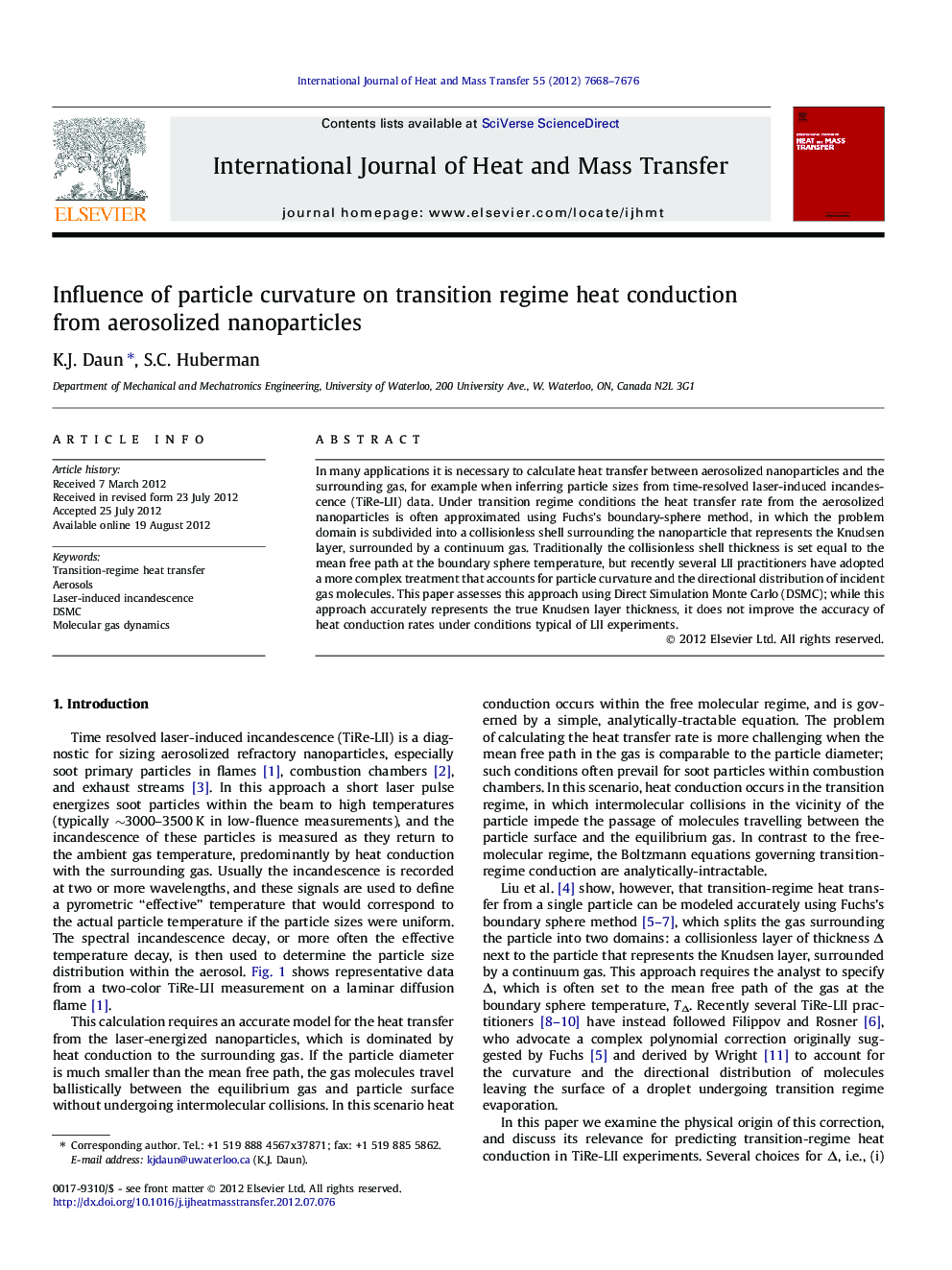| Article ID | Journal | Published Year | Pages | File Type |
|---|---|---|---|---|
| 7059408 | International Journal of Heat and Mass Transfer | 2012 | 9 Pages |
Abstract
In many applications it is necessary to calculate heat transfer between aerosolized nanoparticles and the surrounding gas, for example when inferring particle sizes from time-resolved laser-induced incandescence (TiRe-LII) data. Under transition regime conditions the heat transfer rate from the aerosolized nanoparticles is often approximated using Fuchs's boundary-sphere method, in which the problem domain is subdivided into a collisionless shell surrounding the nanoparticle that represents the Knudsen layer, surrounded by a continuum gas. Traditionally the collisionless shell thickness is set equal to the mean free path at the boundary sphere temperature, but recently several LII practitioners have adopted a more complex treatment that accounts for particle curvature and the directional distribution of incident gas molecules. This paper assesses this approach using Direct Simulation Monte Carlo (DSMC); while this approach accurately represents the true Knudsen layer thickness, it does not improve the accuracy of heat conduction rates under conditions typical of LII experiments.
Related Topics
Physical Sciences and Engineering
Chemical Engineering
Fluid Flow and Transfer Processes
Authors
K.J. Daun, S.C. Huberman,
